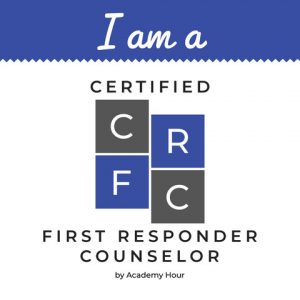In the realm of mental health, the journey from post-traumatic stress to post-traumatic growth is akin to navigating a winding path through the wilderness of the mind. As a mental health counselor who deeply believes in the power of self-compassion and setting boundaries, I’ve witnessed firsthand the transformative potential of embracing one’s journey with self-compassion and understanding. In this article, we’ll delve into the intricate process of healing from trauma, drawing parallels to recovering from a chronic physical illness because your mind deserves just as much care as your body.
Understanding Trauma and its Impact:
Trauma, whether stemming from a singular event or prolonged exposure to adversity, can leave indelible marks on both the body and mind. From the haunting echoes of flashbacks to the visceral grip of anxiety, the aftermath of trauma often manifests as post-traumatic stress disorder (PTSD). According to a recent meta-analysis by Karam et al. (2020), PTSD affects approximately 7.4% of the global population, underscoring the pervasive nature of this condition. According to the Substance Abuse and Mental Health Services Administration (SAMHSA), roughly 1 in 3 First Responders develop PTSD.
Furthermore, trauma disrupts the equilibrium of the nervous system, triggering a cascade of physiological responses that perpetuate a state of hyperarousal, often known as fight-or-flight. While being in fight-or-flight for a short time can be helpful, chronic activation of the body’s stress response system can lead to a host of physical health issues, ranging from cardiovascular problems to immune dysfunction (Felitti et al., 2019). Thus, recovering from trauma includes not only addressing psychological wounds but also tending to the somatic repercussions that reverberate throughout the body.
Embracing Self-Compassion in the Healing Journey:
Central to the process of healing from trauma is the cultivation of self-compassion—an often underestimated yet powerful ally in the face of adversity. Too often, individuals grappling with the aftermath of trauma experience self-criticism and shame, exacerbating their emotional anguish. However, as Neff and Germer (2018) assert, self-compassion offers a pathway to resilience by fostering kindness, mindfulness, and common humanity.
In my clinical practice, I encourage clients to adopt a compassionate stance towards themselves, recognizing that healing is not linear and “setbacks” are an inevitable and valuable part of the journey. Rather than berating themselves for perceived shortcomings, I urge clients to embrace self-soothing techniques, such as grounding exercises and self-care rituals, to navigate moments of distress with grace.
Tip: Not sure what you need? Take a gentle breath and ask yourself – using your name – what you need at this moment. When you’re “freaking out, melting down, having a temper tantrum” – whatever that looks like for you – you’re not being a problem, you’re having a problem. Asking yourself what you need – and waiting for an answer – will help you solve that problem more accurately, efficiently, and with self-compassion.
Setting Boundaries: A Crucial Component of Healing:
As individuals embark on the path to recovery, it’s essential to establish boundaries that safeguard their emotional well-being and preserve their sense of autonomy. Trauma survivors often find themselves navigating tumultuous interpersonal dynamics, grappling with feelings of guilt or obligation that compel them to sacrifice their own needs for the sake of others.
In a study by Thompson et al. (2021), researchers found that boundary-setting skills were positively correlated with psychological well-being among trauma survivors, highlighting the pivotal role of assertiveness in the healing process. By learning to assert their boundaries and prioritize self-care, individuals can reclaim agency over their lives and cultivate healthier, more fulfilling relationships.
The Parallel Journey of Recovery: Trauma and Chronic Illness:
Recovering from trauma shares striking parallels with the journey of managing a chronic physical illness. Just as individuals with a chronic condition must navigate periods of exacerbation and remission, trauma survivors often experience fluctuations in their symptoms and coping abilities, particularly early on. Moreover, both trajectories necessitate a multidimensional approach that addresses the interconnectedness of mind, body, and spirit.
In the realm of trauma therapy, modalities such as Eye Movement Desensitization and Reprocessing (EMDR) offer a holistic framework for healing by integrating somatic sensations, cognitive restructuring, and emotional processing. Through bilateral stimulation, EMDR facilitates the reprocessing of traumatic memories, enabling individuals to desensitize triggers and cultivate adaptive coping strategies (van der Kolk et al., 2015).
Conclusion
In the landscape of trauma recovery, the journey from post-traumatic stress to post-traumatic growth is marked by resilience, self-compassion, and the steadfast pursuit of healing. By embracing a compassionate stance towards oneself, setting boundaries with others, and recognizing the parallels between trauma and chronic illness, individuals can embark on a transformative path towards wholeness and renewal. As a mental health counselor, I am committed to walking alongside my clients as they navigate this terrain, offering support, validation, and unwavering belief in their capacity to recover and thrive.
References:
Karam, E. G., Friedman, M. J., Hill, E. D., Kessler, R. C., McLaughlin, K. A., Petukhova, M., … & Bromet, E. J. (2020). Cumulative traumas and risk thresholds: 12-month PTSD in the World Mental Health (WMH) surveys. Depression and Anxiety, 37(8), 733-748.
Neff, K. D., & Germer, C. K. (2018). The mindful self-compassion workbook: A proven way to accept yourself, build inner strength, and thrive. Guilford Publications.
Thompson, S. L., Miller, K. F., Myers, D. E., Ozer, D. J., & Ferguson, S. S. (2021). The link between boundary ambiguity, boundary-setting strategies, and posttraumatic growth in adulthood. Journal of Family Psychology, 35(1), 87-97.
van der Kolk, B. A., Spinazzola, J., Blaustein, M. E., Hopper, J. W., Hopper, E. K., Korn, D. L., & Simpson, W. B. (2015). A randomized clinical trial of eye movement desensitization and reprocessing (EMDR), fluoxetine, and pill placebo in the treatment of posttraumatic stress disorder: Treatment effects and long-term maintenance. Journal of Clinical Psychiatry, 76(11), 1371-1378.





